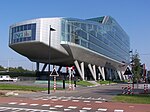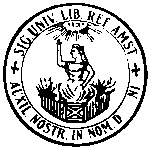Wagener Stadium

Wagener Stadium is a multi-purpose stadium in Amstelveen, Netherlands. It is currently used mostly for field hockey matches and hosted matches for the 1973 World Hockey Cup. The stadium holds 7,600 people. The complex has belonged to the Dutch Hockey Association ("Koninklijke Nederlandse Hockey Bond") since 1980. Its location is the Amsterdamse Bos in Amstelveen. It was built by the Amsterdam Hockey & Bandy Club to honour its president, Joop Wagener (1881–1945). The building was completed in 1938, one year before World War II came to Netherlands. During the 1970s it became clear that AHBC could no longer afford the stadium, which was eventually sold to the Koninklijke Nederlandse Hockey Bond. AHBC still has the first right to play in the stadium.In the past, the stadium has hosted the following major tournaments: Hockey World Cup in 1973, 2022 EuroHockey Nations Championship in 1983, 2009, 2017 Champions Trophy in 1982, 1987, 2000, 2001, 2003, 2006 and 2011
Excerpt from the Wikipedia article Wagener Stadium (License: CC BY-SA 3.0, Authors, Images).Wagener Stadium
Nieuwe Kalfjeslaan, Amstelveen
Geographical coordinates (GPS) Address Nearby Places Show on map
Geographical coordinates (GPS)
| Latitude | Longitude |
|---|---|
| N 52.32 ° | E 4.8525 ° |
Address
AH&BC veld 2
Nieuwe Kalfjeslaan
1182 AE Amstelveen
North Holland, Netherlands
Open on Google Maps







